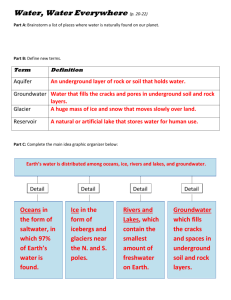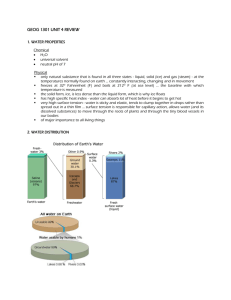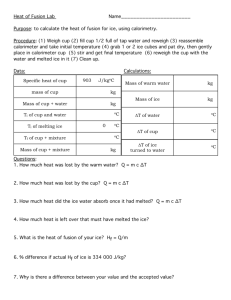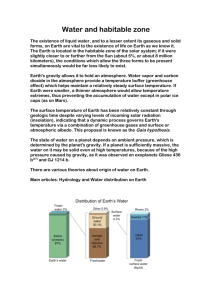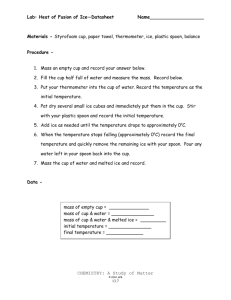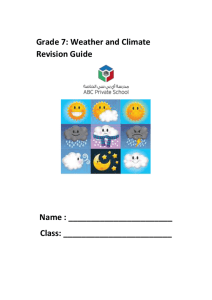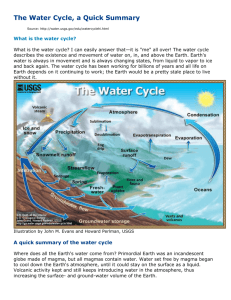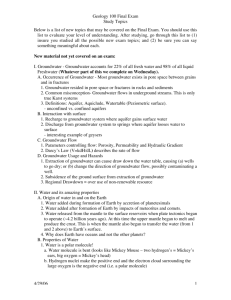civil3_engage - Engineering the Future Workshop
advertisement
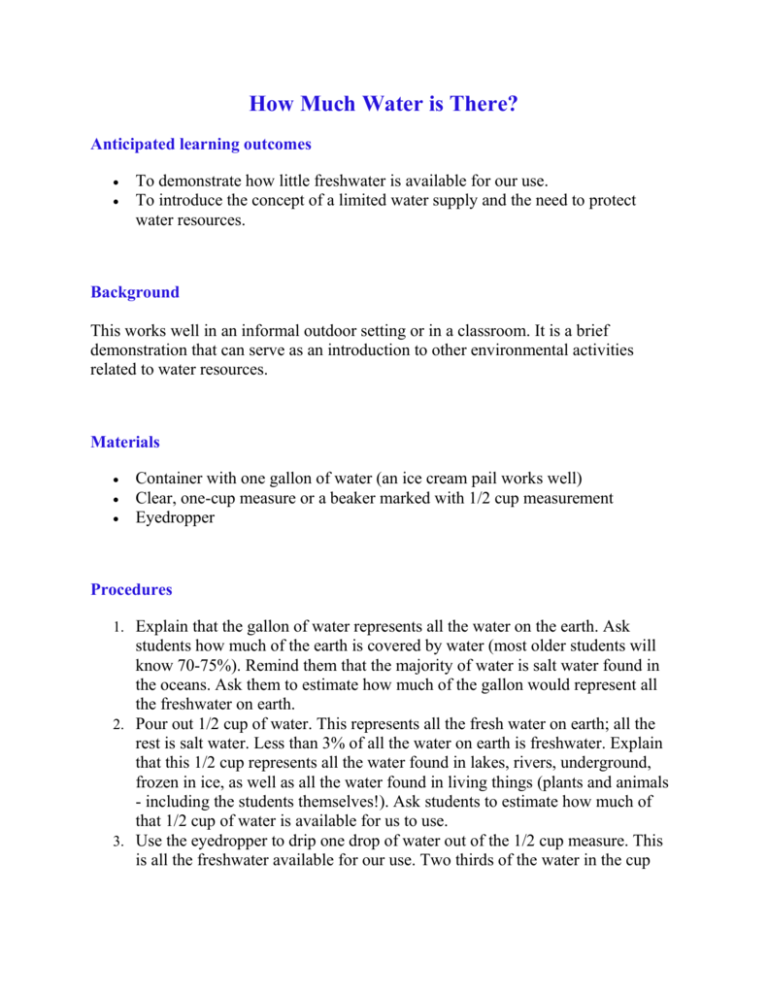
How Much Water is There? Anticipated learning outcomes To demonstrate how little freshwater is available for our use. To introduce the concept of a limited water supply and the need to protect water resources. Background This works well in an informal outdoor setting or in a classroom. It is a brief demonstration that can serve as an introduction to other environmental activities related to water resources. Materials Container with one gallon of water (an ice cream pail works well) Clear, one-cup measure or a beaker marked with 1/2 cup measurement Eyedropper Procedures 1. Explain that the gallon of water represents all the water on the earth. Ask students how much of the earth is covered by water (most older students will know 70-75%). Remind them that the majority of water is salt water found in the oceans. Ask them to estimate how much of the gallon would represent all the freshwater on earth. 2. Pour out 1/2 cup of water. This represents all the fresh water on earth; all the rest is salt water. Less than 3% of all the water on earth is freshwater. Explain that this 1/2 cup represents all the water found in lakes, rivers, underground, frozen in ice, as well as all the water found in living things (plants and animals - including the students themselves!). Ask students to estimate how much of that 1/2 cup of water is available for us to use. 3. Use the eyedropper to drip one drop of water out of the 1/2 cup measure. This is all the freshwater available for our use. Two thirds of the water in the cup represents water frozen as ice, much of the rest is unreachable as deep groundwater, or is bound up as soil moisture, biomass, or in the atmosphere. Results and Discussion 1. Explain that all the water on earth now is the same water that has been here since the dinosaurs lived and that it's all the water we'll have in the future, too. No "new" water is being made. If we don't take care to protect Earth's limited water resources, we'll have to live with polluted water or pay to clean it up. 2. All water is part of the hydrologic cycle, a repeating pattern of evaporation, transport, and precipitation, punctuated with storage periods when the water remains in oceans, lakes, groundwater, atmosphere, or trapped in polar ice caps. These periods may range from a few days in the atmosphere to thousands of years in the ocean. Those numbers are average residence times for individual water molecules - not every drop of water will stay that long and some will be "out of circulation" much longer. Molecules may remain in polar ice for tens of thousands of years. The table below lists commonly accepted percentages for where water is found on Earth. These numbers may vary from other sources you see. The difference occurs because some sources include the water that is part of the chemical compositions of rocks and minerals. EARTH'S WATER SUPPLY Oceans 97.3% Ice 2.19% Groundwater 0.5% Soil Moisture 0.005% Atmosphere 0.001% Inland Lakes 0.018% Rivers 0.000096% https://www.beloit.edu/sepm/Water_Works/how_much_water.html
